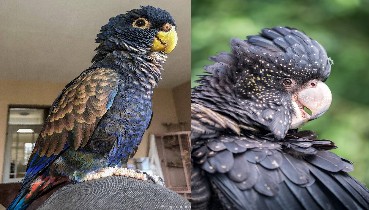
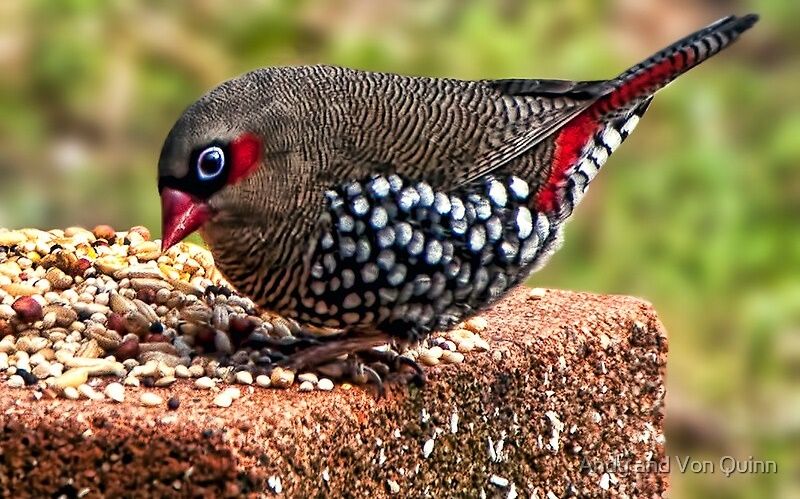
Get Ready to Say 'Awww!' These 50 Cute Animals Are the Most Adorable Creatures in the Entire World
50 Cute Animals

1. Sea Otter

Sea otters, native to the coasts of the North Pacific Ocean, are a member of the weasel family. They are known for floating on their backs on the water’s surface, sometimes within kelp and seaweed forests. In this position, they sleep, eat, care for their young, and cuddle each other!
Sea otters can live up to 23 years, and typically weigh between 60 and 70 pounds. Once hunted nearly to extinction for their fur, sea otters are currently endangered.
Related: Fun Facts
2. Margay

Margays are small, wild cats that live in the evergreen and deciduous forests of Central and South America. They live primarily in trees and use their long, heavy tails for balance.
Mostly nocturnal, margays hunt in trees and eat birds, eggs, fruit, and small mammals. Female margays produce a litter of only one kitten every two years. This, along with the fact that margays have been hunted for their coats, makes these majestic cats endangered.
3. Red Panda

Red pandas mostly live in trees and are only a little larger than a domestic cat. These sweet, furry creatures are known for wrapping themselves up in their tails in the winter for warmth. They primarily live in the Eastern Himalayas.
Like giant pandas, red pandas have a pseudo-thumb, which makes it possible for them to grasp bamboo while they eat. They are the only living members of the family Ailuridae.
4. Elephant Shrew

The distinctive long nose of the elephant shrew lends a whimsical air to these small, fuzzy mammals. Despite their resemblance to mice, elephant shrews are not rodents. They’re not even actually shrews!
They are most closely related to a family of African mammals that includes sea cows, aardvarks and—yes—elephants!
Elephant shrews live in forests and plains in six African countries, eat insects, and give birth to young three to five times a year.
5. Quokka

Quokkas, also known as short-tailed scrub wallabies, are native to Australia. Their young are called “joeys” and live in pouches until they’re old enough to survive on their own, like kangaroos.
Quokkas eat grasses and shrubs and can live up to a month without a drink of water. Rottnest Island, off the coast of Australia, is home to approximately 10,000 quokkas that are known for posing for selfies with island visitors.
6. Fennec Fox

Fennec foxes have the largest ears relative to the body size of any member of the canid family—which certainly contributes to their cuteness factor. They live in the deserts of North Africa and eat insects like locusts, rodents, lizards, birds, and eggs.
Fennec foxes live in family groups of up to 10 foxes in dens. There, they wait out the hottest part of the day before hunting at night.
7. Klipspringer

Klipspringers are a kind of small antelope that lives in eastern and southern Africa. They can jump up to 12 feet in the air, and with their special hooves, they can land on a surface about the size of a silver dollar. Each hoof is only the diameter of a dime.
Klipspringers rest during the hottest parts of the day and emerge from the rocky outcroppings they call home in the mornings and early evenings to graze on leaves, fruit, and blossoms.
8. Japanese Weasel

Japanese weasels live in mountainous and forested areas near the water on the Japanese islands of Honshū, Kyūshū, and Shikoku. They are territorial and live in hollow logs and trees. While Japanese weasels are sometimes found in other habitats—like grasslands and small towns—they tend to avoid highly populated areas.
Japanese weasels are solitary, nocturnal creatures, and are useful for controlling mice and rodent populations.
Related: 101 Riddles with Answers
9. Pika

These mountain-dwelling herbivores have adapted to thrive in inhospitable environments. Because pikas are so small, they tend to live in colonies that afford them protection on the treeless, rocky slopes they call home.
Pikas live in dens that protect them from the cold. In the warmer months, they collect and dry grasses and wildflowers in the sun and store them in their dens for the winter.
10. Quoll

Quolls are tree-dwelling marsupials native to Australia and New Guinea. Their distinctive long tails and spotted coats make these once-abundant mammals easily recognizable.
They are carnivorous and eat small mammals, carrion, and other bits of meat they can get their hands on.
Excluding dingos, quolls are now the largest carnivore on the Australian mainland. The smallest type of quoll weighs a little over two pounds. The largest comes in at an average weight of 11 pounds.
11. Capybara

Capybaras are the largest rodents on earth. They are closely related to guinea pigs, but they’re also semi-aquatic. Like beavers, they’re excellent swimmers. Their toes are partially webbed to allow capybaras to thrive in wetlands.
Like other rodents, capybaras have teeth that grow continuously, so they keep them trimmed by eating firm grasses and fibrous plants. This makes way for a rather unappetizing habit: capybaras eat their own feces each morning, which allows them to digest the protein-rich fibers of the plants they eat twice.
12. Patagonian Mara

The Patagonian Mara is a rabbit-like rodent native to southern Argentina. They hop like rabbits, but can also gallop and “stot,” a kind of movement that involves jumping straight up on all fours.
Maras travel in mated pairs, stopping to raise their young in burrows of up to 15 mated pairs. Mara males are aggressively protective and serve as guardians of their families while the females care for the young.
13. Mangalitsa

These fuzzy, domesticated pigs look like a cross between pigs and sheep. Native to Hungary, mangalitsa pigs are heritage pigs and are kept for their meat (and because they’re adorable). They are the only surviving breed of pig to have a long coat.
Once nearly extinct, there are now about 60,000 mangalitsa piglets born each year.
Related: 250 Would You Rather Questions
14. Tarsier

Easily recognizable by their large eyes, tarsiers are a kind of primate that lives in the Philippines, Indonesia, and Malaysia. Tarsier’s eyes are so large that they are sometimes larger than their brains. Like owls, they can twist their heads 180 degrees in either direction.
Their long fingers and toes aid them as they climb trees and vines in search of their next meal. Tarsiers exclusively eat meat and favor lizards, birds, snakes, frogs, and other small animals.
15. Axolotl

Axolotls are aquatic salamanders with distinct, feathery gills on either side of their heads. Unlike other kinds of salamanders, they retain their larval features—and affinity for water—throughout their adult lives.
Axolotls are critically endangered in the wild due to pollution, fishing, and the pet trade. They can grow to be up to a foot long and can live up to 15 years—longer, in captivity.
16. Tawny frogmouth

Tawny frogmouths closely resemble owls but are actually not owls. They are nocturnal and have a similar facial structure to owls, but they lack the sharp talons and strong feet that owls possess.
They are found throughout Australia and eat insects, worms, and snails. They live in trees and rely on their excellent camouflage to keep them hidden during the daylight hours.
17. Star-nosed mole

These scientific marvels are no less adorable for the fact that they look so strange! Their noses, which are roughly the size of a human fingertip, contain more than 100,000 nerve endings that allow these poor-sighted creatures to navigate through the dark burrows and tunnels they occupy underground.
Star-nosed moles can swim—the only species of mole to do so—and are actually able to smell under water by blowing bubbles. They are the first mammal to be able to detect scents underwater.
18. Leafy sea dragon

Leafy sea dragons maintain their plant-like appearance in order to camouflage with the plant life on the ocean floor, as they are quite poor swimmers. They resemble seahorses but are more closely related to pipefish.
Like both seahorses and pipefish, male sea dragons care for the fertilized eggs. They carry the eggs beneath their tails, where the eggs are provided with oxygen through a special organ.
19. Honduran white bat

Honduran white bats are tiny, reaching an adult size of between 3 and 5 cm long. Their fluffy white coats are offset by orange ears and noses and black, mostly hairless wings.
Honduran white bats live in rainforests, where they roost together upside down in the center of leaves. They move from leaf to leaf every day or so, emerging at night to hunt for vegetation and fruit to eat.
20. Thirteen-lined ground squirrel

These striped squirrels resemble a cross between a squirrel and a chipmunk. They behave like most other kinds of squirrels but are set apart by the distinctive 13 stripes—seven dark stripes and six light stripes—that give them their name.
Thirteen-lined ground squirrels, colloquially known as thirteen liners, are particularly active on warm days and favor a diet of seeds, caterpillars, grasshoppers, crickets, and the occasional small mammal like a mouse or a shrew. Thirteen-liners also enjoy eating cicadas.
21. Long-tailed tit

The long-tailed tit is found in Europe, where it constructs its nest out of feathers, moss, lichen, and spider egg cocoons. Each nest typically contains about 6,000 components.
This insectivore eats the larvae of moths and butterflies in the woodlands it calls home. There, it can be identified by its distinctive triple-trill call.
22. Chevrotain

Also known as mouse-deer, chevrotains are the smallest hoofed mammals in the world. At their largest, the African species of chevrotain weighs about 35 pounds. The Asian species weighs about 18 pounds.
Chevrotains have elongated canines that resemble fangs, but they lack the antlers that deer possess. Short, thin legs beneath somewhat rotund bodies mean these little mammals aren’t the most agile. When faced with predators, chevrotains often submerge themselves under water until the predator goes away.
23. Pygmy hippopotamus

Pygmy hippopotamuses, while closely resembling regular-sized hippos, are different in several significant ways. They possess fewer teeth, are less equipped for quick movement underwater, and they ooze a pink fluid that keeps their thin skin moisturized in the sun.
These herbivores are generally shy and are more likely to flee than to fight. They are typically solitary but sometimes live in small family groups or in mated pairs.
24. Binturong

Binturongs are also known as bearcats. Despite not being closely related to either bears or cats, binturongs do purr and lick themselves to bathe, like cats do. They also mark their territory with a scent that supposedly smells exactly like buttered popcorn.
Binturongs dwell in the trees of northeast India, Bangladesh, Borneo, and the Philippines. They have prehensile tails, like monkeys, that allow them to hang from limbs.
25. Sand cat

These desert-dwelling sand cats have been found across the Sahara Desert and in Syria, Iran, Sudan, Egypt, and in various places across the Arabian Peninsula. They are great at digging, which is how they construct their burrows and catch small rodents for food. Their abnormally large ears—which certainly contribute to their cuteness—are used to listen for the faint squeaks of their prey beneath the sand.
They can go weeks without water and are primarily nocturnal to avoid the oppressive heat of the desert daytime.
26. Slow loris

These adorable nocturnal primates might look innocent with their big eyes and furry faces, but don’t be fooled. They bite with flesh rotting venom.
Despite this particularly brutal defense mechanism, slow lorises rarely use their venom against predators—and certainly not against unsuspecting humans. Instead, they reserve their venomous bite for other slow lorises in order to protect their territory.
27. Mink

Mink are semi-aquatic, which means they have waterproof fur that helps them swim swiftly and dry off quickly. Unfortunately, this quality has often been exploited by the fur industry.
Mink resemble ferrets and weasels and typically live near bodies of water where they hunt rabbits, frogs, muskrats, birds, and insects. They purr and hiss like cats.
28. Arctic fox

Arctic foxes are recognizable by their bright white coats, which help them blend into their snowy, wind-swept environments. As carnivores, Arctic foxes depend on small animals for survival and are particularly fond of lemmings.
Arctic foxes sleep curled up beneath their tails in order to conserve warmth in their chilly habitats. They are also the only canid with fur on the pads of their feet—which helps contribute to the fact that Arctic foxes don’t begin to shiver until temperatures reach –94 degrees Fahrenheit.
29. Pygmy owl

Despite their small stature (most are about the size of a sparrow), pygmy owls are known to take on prey up to three times their own size, including chickens!
They primarily eat songbirds, which is why you can often find pygmy owls being attacked by groups of songbirds protecting their territories. In fact, this is actually a reliable way to find a pygmy owl. If you see songbirds swarming an area, they might be chasing off this unlikely predator.
30. Bee hummingbird

The bee hummingbird is the smallest hummingbird in the world. They measure only 2.24 inches in length! Their eggs are the size of a coffee bean.
These colorful little birds sport vibrant hues of red, orange, yellow, and blue. As they fly, their wings make a sound that resembles the buzzing of a bumblebee.
Bee hummingbirds are incredibly productive little creatures, visiting up to 1,500 flowers a day!
31. Tree kangaroo

Tree kangaroos live in the rainforests of Papua New Guinea, Indonesia, and northern Australia. There are 14 species of tree kangaroo, each with short legs and strong forearms that enable them to climb. They look a little like a cross between a kangaroo and a lemur and spend their days munching on vegetation.
Tree kangaroos are believed to be a threatened species, as they face deforestation in their natural habitat.
32. Pygmy goat

There are several breeds of pygmy goats native to various areas of the world, but they all have their small stature in common. Typically, pygmy goats weigh between 30 and 80 pounds and stand at no more than 3 feet high. Many of them are prized for their abundant fur and ability to clear brush and weeds by grazing.
Pygmy goats are known to have sweet dispositions and are often kept as pets.
33. Aardwolf

Aardwolves resemble smaller, striped hyenas. They are shy and primarily nocturnal. Aardwolves are native to Africa. The name “aardwolf” means “earth-wolf” in Afrikaans.
Aardwolves sport sticky tongues that allow them to lap up their favorite food: termites. These insectivores prefer termites above all other kinds of food. To make the most of their preferred cuisine, they have their pups during the rainy season when termites are most active!
34. Racoon dog

Racoon dogs are native to Asia and, despite their name, are most closely related to foxes. They regularly climb trees and enjoy eating voles, frogs, grouse, fruits, and veggies.
Racoon dogs are considered an invasive species in Europe, where they were introduced as a result of the fur trade. They are the only canids that hibernate.
35. Gecko

More than 1,000 species of lizard make up the suborder Gekkota and can commonly be called geckos. Often kept as pets, these small, carnivorous lizards feed on insects and are known for the adhesive pads on the bottoms of their feet that allow them to stick to surfaces in order to climb them.
Geckos are very fast, which allows them to escape predators. They also detach their tails when threatened and can regenerate them later on. Unlike many other lizards, geckos vocalize by chirping and barking.
36. Miniature pig

Miniature pigs, sometimes called teacup pigs, have gained popularity as pets in recent years. It’s easy to see why!
Experts warn that although these sweet-mannered animals might be tiny when they’re young, they can still grow to be as large as 100 pounds in adulthood, meaning many miniature pig owners get a lot more than they bargained for. The lowest realistic weight for a miniature pig is considered to be around 70 pounds.
Miniature pigs have sometimes been trained as therapy animals to bring comfort to those in nursing homes, hospitals, and schools.
37. Cuttlefish

Cuttlefish are cephalopods like octopi and squids and feature an internal shell called a cuttlebone. The cuttlefish evolved about 21 million years ago and is believed to share an ancestor with ancient land animals.
Some cuttlefish species produce a toxic venom that allows them to ward off predators, and most produce ink that has been used as both a dye and a medicine. There are more than 120 different species of cuttlefish, each of them sharing the same elongated shape.
38. Quetzal

There are five species of bird that are considered quetzals, each living in the neotropics of Central and South America. Quetzals are colorful birds, and several species have tail feathers that splay out behind them as they fly. The tail feathers of a male quetzal can be up a meter long!
Skilled hunters, quetzals are omnivorous and often eat frogs, lizards, insects, and snails. They live close to the top of the forest canopy, where they nest inside trees within holes they carve out with their beaks.
39. Okapi

The okapi is the only living relative of the giraffe. It resembles a cross between a deer and a zebra.
Tall, upright ears allow the okapi to hear faint sounds and, like the giraffe, it possesses a prehensile tongue to remove leaves and buds from the branches of trees and shrubs.
Okapi are most comfortable in rainforests and are native to the Democratic Republic of Congo.
40. Spectacled bear

The spectacled bear, also called the Andean bear, has a distinct, tan or white pattern on its face that looks like a pair of spectacles. It’s the only species of bear in South America.
Spectacled bears are considered midsize bears, and typically stand at about two to three feet at the shoulder. Because they’re shy and wary of humans, spectacled bears are difficult to study. They eat more than 300 different kinds of plants (and 20 kinds of animals) and have even been known to eat cacti.
41. Gerenuk

The name “gerenuk” means “giraffe-necked” in Somali, and it’s easy to see why. These long-necked gazelles hail from the Horn of Africa and some parts of East Africa. Their heads are quite small for their bodies, but their unconventional proportions make it possible for them to stand on their hind legs in order to eat vegetation off of high shrubs and trees.
Gerenuk males have lyre-shaped horns that add to their whimsical appearance.
42. Tamandua

Tamanduas are a kind of anteater, although they are much smaller than the anteaters you might be familiar with. They weigh only 5 to 17 pounds. Tamanduas have the lowest body temperature of any land mammal.
Despite their sweet faces, tamanduas are an animal you might not want to get too close to—when threatened, they spray a stinky secretion that’s four times stronger than the smell of a skunk.
3. Viscacha

The viscacha, also spelled vizcacha, might look like a cuddly rabbit, but it’s not a rabbit at all. Viscachas are actually a kind of chinchilla. You can tell by their long, bushy tails, which are a trademark characteristic of the Chincillidae family.
All five species of viscacha live in southern and western South America. They live in colonies, and have an average weight of about 3.5 pounds.
44. Tamarin

Tamarin monkeys are generally about the size of a squirrel and sometimes sport long, white, mustache-like facial hair. They occupy the trees of tropical rainforests, where they swing between branches and search for fruits, insects, and bird eggs to eat.
The golden lion tamarin is one of the most recognizable types, with its full leonine mane. Golden lion tamarins were once critically endangered, but after conservation efforts that were reclassified as only endangered in 2003.
45. Sugar glider

Sugar gliders, like kangaroos, are marsupials. Unlike kangaroos, they are sometimes kept as pets in the United States. Sugar gliders are highly social creatures and, when kept as pets, should always be kept with other sugar gliders, provided all animals have been spayed or neutered. In the wild, they live in colonies of up to seven adults and their babies, called joeys.
Sugar gliders possess a membrane between their wrists and their ankles that allows them to “glide” from tree to tree. They weigh only 3 to 5 ounces.
46. Platypus

The platypus is a rare kind of mammal known as a monotreme, which means it lays eggs. Platypuses are also venomous—another rare trait for a mammal—and male platypuses excrete the venom through a gland on their legs.
Platypuses are found only in Australia, and their elusive nature means they are difficult to study. As a result, there’s still a lot we don’t know about them or their habits.
47. Tasmanian Devil

Another interesting Australian animal, the Tasmanian devil was made famous by the Looney Toons character of the same name. The Tasmanian devil, a marsupial, has a fearsome reputation. They are known for shrieking, emitting a foul odor, and opening their mouths into an intimidating “gaping” position that’s meant to warn off adversaries.
Tasmanian devils are a protected species and are thought to have gone extinct on the mainland about 400 years ago.
48. Culpeo

Culpeos are opportunistic predators, which means they’ll hunt any kind of convenient prey. In the past, culpeos were domesticated to create Fuegian dogs, a species of canid that is now extinct. Culpeos are considered endangered.
49. Verreaux’s Sifaka

Verreaux’s Sifaka is a kind of lemur which, like other members of the lemur family, is found only in Madagascar. Its long tail is used for balance as it travels from tree to tree. Sifakas are very well adapted to life in the trees—so much so that they don’t know how to walk on the ground. They can only hop.
Verreaux’s Sifakas enjoy sunbathing and live in groups called troops, which contain between 2 and 12 adults. As of 2020, Verreaux’s Sifakas are critically endangered.
50. Snowshow hare

Snowshoe hares live in the boreal forests of North America. Their fur changes in color throughout the year from brown to white to help them camouflage with their environment.
Recommended Videos
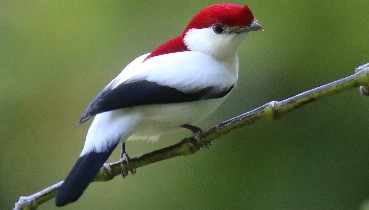 The Araripe manakin (Antilophia bokermanni) is a species of critically endangered bird from the family of manakins (Pipridae).4727 views
The Araripe manakin (Antilophia bokermanni) is a species of critically endangered bird from the family of manakins (Pipridae).4727 views CEBU FLOWERPECKER (DICAEUM QUADRICOLOR)81 views
CEBU FLOWERPECKER (DICAEUM QUADRICOLOR)81 views-
Advertisements
 30 Funny WTF Pictures That You've Ever Seen1525 views
30 Funny WTF Pictures That You've Ever Seen1525 views Impressive Churches And Monasteries In Greece508 views
Impressive Churches And Monasteries In Greece508 views Prehistoric Animals:811 views
Prehistoric Animals:811 views Artist Brian Mock Takes Scrap Metal And Turns It Into Beautiful Sculptures..496 views
Artist Brian Mock Takes Scrap Metal And Turns It Into Beautiful Sculptures..496 views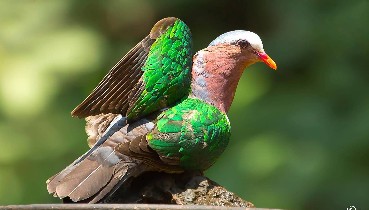 The common emerald dove (Chalcophaps indica),668 views
The common emerald dove (Chalcophaps indica),668 views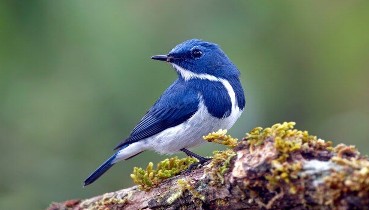 The ultramarine flycatcher or the white-browed blue flycatcher (Ficedula superciliaris)1185 views
The ultramarine flycatcher or the white-browed blue flycatcher (Ficedula superciliaris)1185 views



